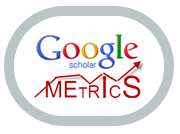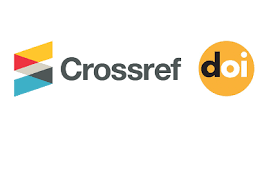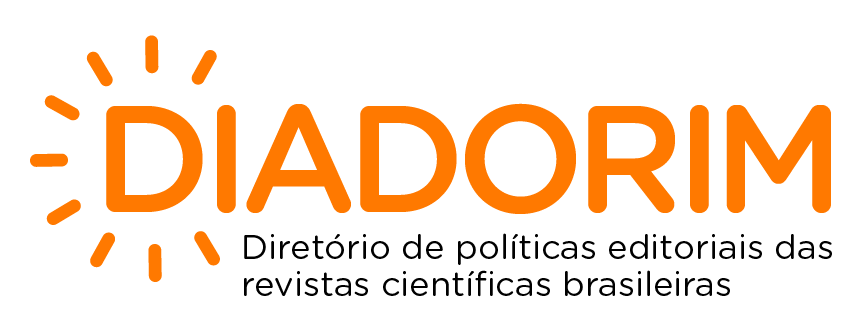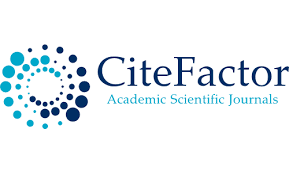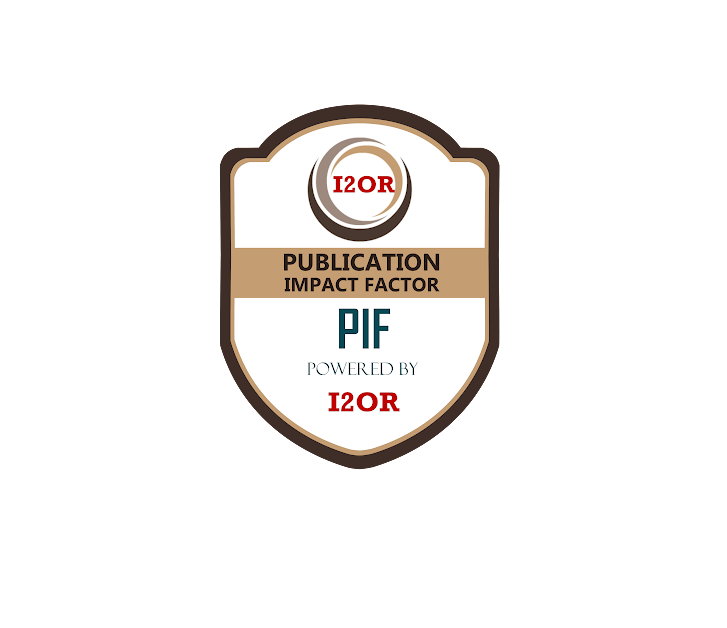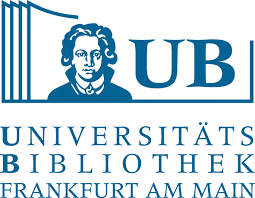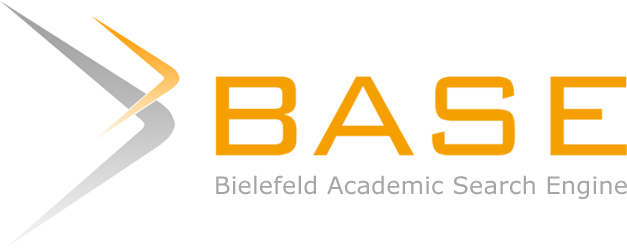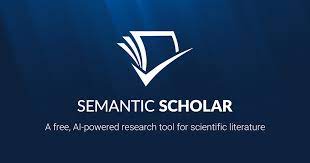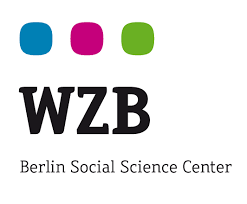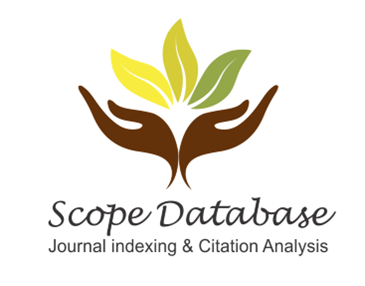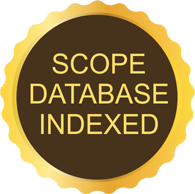REVISIÓN DEL PAPEL DE LA INTELIGENCIA ARTIFICIAL EN LAS TÉCNICAS DE REPRODUCCIÓN ASISTIDA
DOI:
https://doi.org/10.70187/recisatec.v5i3.384Palabras clave:
Inteligencia artificial, Técnicas de reproducción asistida, Estimulación ovárica, Ovocitos, Semen.Resumen
Los métodos basados en inteligencia artificial (IA) son ideales para manipular, procesar y analizar grandes volúmenes de datos generados durante las etapas de las Técnicas de Reproducción Asistida (TRA). Estos datos pueden ser de diversos tipos, incluyendo números, textos e imágenes. Esto puede ocurrir durante la evaluación del potencial reproductivo de la paciente con el fin de individualizar los protocolos y optimizar las posibilidades de embarazo. Han surgido como herramientas objetivas, cuantificables y no invasivas para un análisis rápido y preciso, aumentando las probabilidades de éxito de los tratamientos. El objetivo de esta revisión es examinar exhaustivamente la literatura y explorar en orden cronológico los últimos avances en IA, específicamente en las etapas de TRA, incluyendo la estimulación ovárica controlada y el análisis de ovocitos y semen. Se resumieron 19 artículos publicados entre 2021 y 2025, extraídos de dos bases de datos electrónicas, utilizando los siguientes términos: "fertilización in vitro", "estimulación ovárica", "desencadenante", "ovocitos", "espermatozoides", "Inteligencia Artificial", "Aprendizaje Profundo" y "Aprendizaje Automático". La revisión, además de ayudar a los investigadores a obtener una comprensión más completa del estado y las tendencias futuras del trabajo de IA en TRA, permitirá a los investigadores interdisciplinarios proponer técnicas combinadas para llevar a cabo enfoques individualizados que reduzcan los impactos socioeconómicos y posiblemente ambientales.
Descargas
Citas
Organização Mundial Da Saúde. Infertily prevalence estimates: 1990-1921 [Internet]. Geneva: WHO; 2023. [cited 2025 Feb 15]. Available from: https://www.who.int/publications/i/item/978920068315.
Conselho Federal De Medicina (CFM). Resolução CFM nº 2.294, de 15 de junho de 2021. Adota as normas éticas para a utilização das técnicas de reprodução assistida – sempre em defesa do aperfeiçoamento das práticas e da observância aos princípios éticos e bioéticos que ajudam a trazer maior segurança e eficácia a tratamentos e procedimentos médicos, tornando-se o dispositivo deontológico a ser seguido pelos médicos brasileiros e revogando a Resolução CFM nº 2.168, publicada no D.O.U. de 10 de novembro de 2017, Seção I, p. 73. Diário Oficial da União [Internet]. Brasília, p. 60, 15 jun 2021. [cited 2025 Feb 16]. Available from: https://bit.ly/3XHKyf1.
Chow DJX, Wijesinghe P, Dholakia K, Dunning KR. Does artificial intelligence have a role in the IVF clinic? Reproduction and Fertility [Internet]. 2021 Sep 15;2(3):C29-34. [cited 2025 Feb 16]. Available from: https://raf.bioscientifica.com/view/journals/raf/2/3/RAF-21-0043.xml?main%20body=pdf-62708. doi: 10.1530/RAF-21-0043. PMID: 35118395; PMCID: PMC8801019. DOI: https://doi.org/10.1530/RAF-21-0043
Zaninovic N, Rosenwaks Z. Artificial intelligence in human in vitro fertilization and embryology. Fertility and Sterility [Internet]. 2020 Nov 1;114(5):914-20. doi: 10.1016/j.fertnstert.2020.09.157. PMID: 33160513. DOI: https://doi.org/10.1016/j.fertnstert.2020.09.157
Chen H, Li J, Cai S, Zeng S, Yin C, Kuang W, et al. Impact of body mass index (BMI) on the success rate of fresh embryo transfer in women undergoing first in vitro fertilization/intracytoplasmic sperm injection (IVF/ICSI) treatment. International Journal of Obesity [Internet]. 2021 Oct 9;46(1):202-10. [cited 2025 Feb 16]. Available from: https://www.nature.com/articles/s41366-021-00978-0. doi: 10.1038/s41366-021-00978-0. DOI: https://doi.org/10.1038/s41366-021-00978-0
Radin Dabbagh Rezaeiyeh, Arian Mehrara, Ali M, Fallahi J, Sedighe Forouhari. Impact of Various Parameters as Predictors of The Success Rate of In Vitro Fertilization. DOAJ (DOAJ: Directory of Open Access Journals). 2022 Apr 1;16(2):76-84. [cited 2025 Feb 16]. Available from: https://doi.org/10.22074/ijfs.2021.531672.1134.
Fanton M, Nutting V, Solano F, Maeder-York P, Hariton E, Barash O, et al. An interpretable machine learning model for predicting the optimal day of trigger during ovarian stimulation. Fertility and Sterility [Internet]. 2022 Jul 1;118(1):101-8. [cited 2025 Feb 16]. Available from: https://www.fertstert.org/article/S0015-0282(22)00244-8/fulltext. doi:10.1016/j.fertnstert.2022.04.003.
Datta AK. Maheshwari A, Felix N, Campbell S, Nargund G. Mild versus conventional ovarian stimulation for IVF in poor, normal and hyper-responders: a systematic review and meta-analysis. Hum Reprod Update [Internet]. 2021 Feb 19;27(2):229-253. [cited 2025 Feb 16]. Available from: https://academic.oup.com/humupd/article/27/2/229/5955862. doi: 10.1093/humupd/dmaa035. PMID: 33146690; PMCID: PMC7902993. DOI: https://doi.org/10.1093/humupd/dmaa035
Bosch E, Labarta E, Kolibianakis E, Rosen M, Meldrum D. Regimen of ovarian stimulation affects oocyte and therefore embryo quality. Fertility and Sterility. 2016 Mar;105(3):560-70. [cited 2025 Feb 20]. Available from: https://www.fertstert.org/article/S0015-0282(16)00063-7/fulltext. doi: 10.1016/j.fertnstert.2016.01.022. PMID: 26826273. DOI: https://doi.org/10.1016/j.fertnstert.2016.01.022
Rawan AlSaad, Alaa Abd-alrazaq, Fadi Choucair, Ahmed A, Aziz S, Sheikh J. Harnessing Artificial Intelligence to Predict Ovarian Stimulation Outcomes in In Vitro Fertilization: Scoping Review. Journal of Medical Internet Research [Internet]. 2024 Jul 5;26:e53396-6. [cited 2025 Feb 20]. Available from: https://www.jmir.org/2024/1/e53396. doi: 10.2196/53396. DOI: https://doi.org/10.2196/53396
Choo CW, Kim JH. A prospective cohort study to develop a treatment algorithm for controlled ovarian stimulation to select a starting dose of recombinant follicle stimulating hormone based on patient characteristics and ovarian response (fame study). Fertil Steril [Internet]. 2021 116(3):e196-e197, 2021. [cited 2025 Feb 20]. Available from: https://www.fertstert.org/article/S0015-0282(21)01137-7/fulltext. doi: 10.1016/j.fertnstert.2021.07.538. DOI: https://doi.org/10.1016/j.fertnstert.2021.07.538
Targosz A, Przystałka P, Wiaderkiewicz R, Mrugacz G. Semantic segmentation of human oocyte images using deep neural networks. BioMedical Engineering OnLine [Internet]. 2021 Apr 23;20(1). [cited 2025 Feb 20]. Available from: https://biomedical-engineering-online.biomedcentral.com/articles/10.1186/s12938-021-00864-w. doi: 10.1186/s12938-021-00864-w PMID: 33892725; PMCID: PMC8066497. DOI: https://doi.org/10.1186/s12938-021-00864-w
Aykaç A, Kaya C, Çelik Ö., Aydin ME, Sungur M. A predição da qualidade do sêmen com base em comportamentos de estilo de vida por modelos baseados em aprendizado de máquina. Reproductive Biology and Endocrinology. [Internet]. 2024 2024 Aug 29, 22(1). [cited 2025 Feb 20]. Available from: https://rbej.biomedcentral.com/articles/10.1186/s12958-024-01268-w. doi: 10.1186/s12958-024-01268-w. DOI: https://doi.org/10.1186/s12958-024-01268-w
Zhao M, Xu M, Li H, Alqawasmeh O, Chung JPW, Li TC, et al. Application of convolutional neural network on early human embryo segmentation during in vitro fertilization. Journal of Cellular and Molecular Medicine [Internet]. 2021 Mar 1;25(5):2633-44. [cited 2025 Feb 20]. Available from: https://pubmed.ncbi.nlm.nih.gov/33486848/. doi: 10.1111/jcmm.16288. Epub 2021 Jan 24. PMID: 33486848; PMCID: PMC7933952. DOI: https://doi.org/10.1111/jcmm.16288
Asada Y, Shinohara T, Yonezawa S, Kinugawa T, Asano E, Kojima M, et al. Development of an AI‐based support system for controlled ovarian stimulation. Reproductive Medicine and Biology [Internet]. 2024 Jan;23(1). [cited 2025 Feb 20]. Available from: https://pmc.ncbi.nlm.nih.gov/articles/PMC11366684/. doi: 10.1002/rmb2.12603. PMID: 39224211; PMCID: PMC11366684. DOI: https://doi.org/10.1002/rmb2.12603
Fanton M, Nutting V, Solano F, Maeder-York P, Hariton E, Barash O, Weckstein L, Sakkas D, Copperman AB, Loewke K. An interpretable machine learning model to predict optimal trigger day during ovarian stimulation. Fertil Steril [Internet]. 2022;118(1):101-108. [cited 2025 Feb 20]. Available from: https://linkinghub.elsevier.com/retrieve/pii/S0015-0282(22)00244-8.S0015-0282(22)00244-8. doi: 10.1016/j.fertnstert.2022.04.003. DOI: https://doi.org/10.1016/j.fertnstert.2022.04.003
Ferrand T, Boulant J, He C, Jérôme Chambost, Jacques C, Pena CA, et al. Predicting the number of oocytes retrieved from controlled ovarian hyperstimulation with machine learning. Human Reproduction [Internet]. 2023 Aug 15;38(10):1918-26. [cited 2025 Feb 20]. Available from: https://pmc.ncbi.nlm.nih.gov/articles/PMC10546073/. doi: 10.1093/humrep/dead163. PMID: 37581894; PMCID: PMC10546073. DOI: https://doi.org/10.1093/humrep/dead163
Hariton E, Chi EA, Chi G, Morris JR, Braatz J, Rajpurkar P, et al. A machine learning algorithm can optimize the day of trigger to improve in vitro fertilization outcomes. Fertility and Sterility [Internet]. 2021 Nov;116(5):1227-35. [cited 2025 Feb 20]. Available from: https://pubmed.ncbi.nlm.nih.gov/34256948/. doi: 10.1016/j.fertnstert.2021.06.018. DOI: https://doi.org/10.1016/j.fertnstert.2021.06.018
Houri O, Gil Y, Danieli-Gruber S, Shufaro Y, Sapir O, Hochberg A, et al. Prediction of oocyte maturation rate in the GnRH antagonist flexible IVF protocol using a novel machine learning algorithm - A retrospective study. European journal of obstetrics, gynecology, and reproductive biology [Internet]. 2023 May;284:100-4. [cited 2025 Feb 20]. Available from: https://pubmed.ncbi.nlm.nih.gov/36965213/. doi: 10.1016/j.ejogrb.2023.03.022. Epub 2023 Mar 21. PMID: 36965213. DOI: https://doi.org/10.1016/j.ejogrb.2023.03.022
Hua L, Zhe Y, Jing Y, Shen Fujin, Jiao C, Liu L. Prediction model of gonadotropin starting dose and its clinical application in controlled ovarian stimulation. BMC Pregnancy and Childbirth [Internet]. 2022 Nov 4;22(1). [cited 2025 Feb 20]. Available from: https://pubmed.ncbi.nlm.nih.gov/36333671/. doi: 10.1186/s12884-022-05152-6. PMID: 36333671; PMCID: PMC9635211. DOI: https://doi.org/10.1186/s12884-022-05152-6
Liang X, Liang J, Zeng F, Yang L, Li Y, Cai K, et al. Evaluation of oocyte maturity using artificial intelligence quantification of follicle volume biomarker by three-dimensional ultrasound. Reproductive Biomedicine Online [Internet]. 2022 Dec 1;45(6):1197-206. [cited 2025 Feb 20]. Available from: https://pubmed.ncbi.nlm.nih.gov/36075848/. doi: 10.1016/j.rbmo.2022.07.012. Epub 2022 Jul 28. PMID: 36075848. DOI: https://doi.org/10.1016/j.rbmo.2022.07.012
Liu L, Shen F, Liang H, Yang Z, Yang J, Chen J. Machine Learning-Based Modeling of Ovarian Response and the Quantitative Evaluation of Comprehensive Impact Features. Diagnostics [Internet]. 2022 Feb 14;12(2):492. [cited 2025 Feb 21]. Available from: https://pubmed.ncbi.nlm.nih.gov/35204580/. doi: 10.3390/diagnostics12020492. PMID: 35204580; PMCID: PMC8871024. DOI: https://doi.org/10.3390/diagnostics12020492
Wei J, Xiong D, Zhang Y, Zeng J, Liu W, Ye F. Predicting ovarian responses to the controlled ovarian hyperstimulation in elderly infertile women using clinical measurements and random forest regression. European journal of obstetrics, gynecology, and reproductive biology [Internet]. 2023 Sep;288:153-9. [cited 2025 Feb 21]. Available from: https://pubmed.ncbi.nlm.nih.gov/37544248/. doi: 10.1016/j.ejogrb.2023.07.012. Epub 2023 Jul 24. PMID: 37544248. DOI: https://doi.org/10.1016/j.ejogrb.2023.07.012
Yan S, Jin W, Ding J, Yin T, Zhang Y, Yang J. Machine-intelligence for developing a potent signature to predict ovarian response to tailor assisted reproduction technology. Aging [Internet]. 2021;13(13):17137–54. [cited 2025 Feb 21]. Available from: https://pubmed.ncbi.nlm.nih.gov/33999860/. doi: 10.18632/aging.203032. Epub 2021 May 17. PMID: 33999860; PMCID: PMC831246. DOI: https://doi.org/10.18632/aging.203032
Krystian Zieliński, Pukszta S, Mickiewicz M, Kotlarz M, Piotr Wygocki, Marcin Zieleń, et al. Personalized prediction of the secondary oocytes number after ovarian stimulation: A machine learning model based on clinical and genetic data. PLoS Computational Biology [Internet]. 2023 Apr 27;19(4):e1011020–0. [cited 2025 Feb 20]. Available from: https://journals.plos.org/ploscompbiol/article?id=10.1371/journal.pcbi.1011020. doi: 10.1371/journal.pcbi.1011020. PMID: 37104276; PMCID: PMC10138216. DOI: https://doi.org/10.1371/journal.pcbi.1011020
Fjeldstad J, Qi W, Siddique N, Mercuri N, Nayot D, Krivoi A. Segmentation of mature human oocytes provides interpretable and improved blastocyst outcome predictions by a machine learning model. Scientific Reports [Internet]. 2024 May 8;14(1):10569. [cited 2025 Feb 20]. Available from: https://www.nature.com/articles/s41598-024-60901-1#Abs1. doi: 10.1038/s41598-024-60901-1. PMID: 38719918; PMCID: PMC11078996. DOI: https://doi.org/10.1038/s41598-024-60901-1
Baručić D, Kybic J, Teplá O, Topurko Z, Kratochvílová I. Automatic evaluation of human oocyte developmental potential from microscopy images. In: Proceedings of the 17th international symposium on medical information processing and analysis. 2021. 12088:403-9. DOI: https://doi.org/10.1117/12.2604010
Targosz A, Myszor D, Mrugacz G. Human oocytes image classification method based on deep neural networks. BioMedical Engineering OnLine [Internet]. 2023 Sep 21;22:92. [cited 2025 Feb 20]. Available from: https://www.ncbi.nlm.nih.gov/pmc/articles/PMC10512614/. doi: 10.1186/s12938-023-01153-4. PMID: 37735409; PMCID: PMC10512614. DOI: https://doi.org/10.1186/s12938-023-01153-4
Yang H, Ma M, Chen X, Chen G, Shen Y, Zhao L, et al. Multidimensional Morphological Analysis of Live Sperm Based on Multiple-target Tracking. Computational and Structural Biotechnology Journal [Internet]. 2024 Mar 1: 176-184. ISSN 2001 0370. [cited 2025 Feb 20]. Available from: https://www.sciencedirect.com/science/article/pii/S2001037024000497. doi: 10.1016/j.csbj.2024.02.025. DOI: https://doi.org/10.1016/j.csbj.2024.02.025
Mehrjerd A, Dehghani T, Jajroudi M, Eslami S, Rezaei H, Ghaebi NK. Ensemble machine learning models for sperm quality evaluation concerning success rate of clinical pregnancy in assisted reproductive techniques. Scientific Reports [Internet]. 2024 Oct 16;14(1). [cited 2025 Feb 21]. Available from: https://pubmed.ncbi.nlm.nih.gov/39414869/. doi: 10.1038/s41598-024-73326-7. PMID: 39414869; PMCID: PMC11484743. DOI: https://doi.org/10.1038/s41598-024-73326-7
Lutfullah Sagir, Kaba E, Merve Huner Yigit, Filiz Tasci, Uzun H. Predicting Semen Analysis Parameters from Testicular Ultrasonography Images Using Deep Learning Algorithms: An Innovative Approach to Male Infertility Diagnosis. Journal of Clinical Medicine [Internet]. 2025 Jan 15;14(2):516-6. [cited 2025 Feb 21]. Available from: https://pmc.ncbi.nlm.nih.gov/articles/PMC11766078/. doi: 10.3390/jcm14020516. DOI: https://doi.org/10.3390/jcm14020516
Wang J, Jin Y, Jiang A, Chen W, Shan G, Gu Y, et al. Testing the generalizability and effectiveness of deep learning models among clinics: sperm detection as a pilot study. Reproductive Biology and Endocrinology [Internet]. 2024 May 22;22(1). [cited 2025 Feb 20]. Available from: https://rbej.biomedcentral.com/articles/10.1186/s12958-024-01232-8. doi: 10.1186/s12958-024-01232-8. PMID: 38778327; PMCID: PMC11110326. DOI: https://doi.org/10.1186/s12958-024-01232-8
Descargas
Publicado
Cómo citar
Número
Sección
Categorías
Licencia
Derechos de autor 2025 REVISTA CIENTÍFICA RECISATEC - ISSN 2763-8405

Esta obra está bajo una licencia internacional Creative Commons Atribución 4.0.
Os direitos autorais dos artigos/resenhas/TCCs publicados pertecem à revista RECISATEC, e seguem o padrão Creative Commons (CC BY 4.0), permitindo a cópia ou reprodução, desde que cite a fonte e respeite os direitos dos autores e contenham menção aos mesmos nos créditos. Toda e qualquer obra publicada na revista, seu conteúdo é de responsabilidade dos autores, cabendo a RECISATEC apenas ser o veículo de divulgação, seguindo os padrões nacionais e internacionais de publicação.



